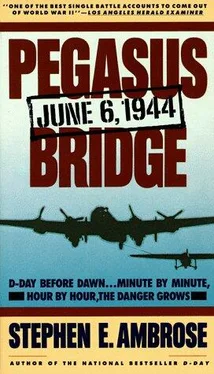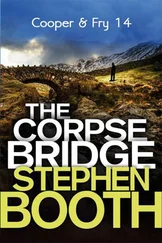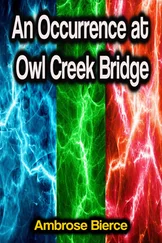Stephen Ambrose - Pegasus Bridge
Здесь есть возможность читать онлайн «Stephen Ambrose - Pegasus Bridge» весь текст электронной книги совершенно бесплатно (целиком полную версию без сокращений). В некоторых случаях можно слушать аудио, скачать через торрент в формате fb2 и присутствует краткое содержание. Жанр: История, на английском языке. Описание произведения, (предисловие) а так же отзывы посетителей доступны на портале библиотеки ЛибКат.
- Название:Pegasus Bridge
- Автор:
- Жанр:
- Год:неизвестен
- ISBN:нет данных
- Рейтинг книги:5 / 5. Голосов: 1
-
Избранное:Добавить в избранное
- Отзывы:
-
Ваша оценка:
- 100
- 1
- 2
- 3
- 4
- 5
Pegasus Bridge: краткое содержание, описание и аннотация
Предлагаем к чтению аннотацию, описание, краткое содержание или предисловие (зависит от того, что написал сам автор книги «Pegasus Bridge»). Если вы не нашли необходимую информацию о книге — напишите в комментариях, мы постараемся отыскать её.
Pegasus Bridge — читать онлайн бесплатно полную книгу (весь текст) целиком
Ниже представлен текст книги, разбитый по страницам. Система сохранения места последней прочитанной страницы, позволяет с удобством читать онлайн бесплатно книгу «Pegasus Bridge», без необходимости каждый раз заново искать на чём Вы остановились. Поставьте закладку, и сможете в любой момент перейти на страницу, на которой закончили чтение.
Интервал:
Закладка:
Gale had come down by glider, about 0300, and established his headquarters in Ranville. He and his brigadiers were on their way to consult with Pine Coffin, whose 7th Battalion was hotly engaged with enemy patrols in Benouville and Le Port. Gale called out to D Company, as he marched along, 'Good show, chaps'. After a briefing from Howard, Gale and his companions marched across the bridge. They were shot at but not hit, and they never flinched.
As they disappeared into Pine Coffin's headquarters, two gun-boats suddenly appeared, coming up from the coast headed towards Caen. They were coming from the small harbour in Ouistreham, which was under attack by elements of Lord Lovat's Commando brigade. The gun-boats were obviously aware that the bridge was in unfriendly hands, because the lead boat came on at a steady speed, firing its 20mm cannon at the bridge. Parr could not shoot back with the anti-tank gun because the bridge and its superstructure blocked his field of fire. Corporal Godbold, commanding no. 2 platoon, was on the bank with a Piat. Howard ordered his men to hold their fire until the gun-boat was in Godbold's range. Then some of 7 Para on the other side started firing at the boat. Godbold let go, at maximum range, and to his amazement he saw the Piat bomb explode inside the wheelhouse. The gunboat turned sideways, the bow plunged into the para bank, the stern jammed against D Company's side.
Germans started running off the stern, hands high, shouting 'Kamerad, Kamerad'. The captain, dazed but defiant, had to be forced off the boat. Howard remembers him as being eighteen or nineteen; very tall, and speaking good English. 'He was ranting on in English about what a stupid thing it was for us to think of invading the continent, and when his Flihrer got to hear about it we would be driven back into the sea. He was making the most insulting remarks and I had the greatest difficulty stopping my chaps from getting hold and lynching that bastard on the spot.' But Howard knew that intelligence would want to see the young officer immediately, so he had the prisoner marched off towards the POW cage in Ranville. 'And he had to be frog-marched back because he was so truculent and shouting away all the time.'
The sappers looked around the boat, examining equipment, searching for ammunition and guns. One ofthem^a 19-year-old named Ramsey, found a bottle of brandy and stuck it in his battle smock. His commander, Jock Neilson, noticed the bulge and asked what it was. The sapper showed him and Neilson took it, saying, 'You are not old enough for that'. The sapper complains, 'I never saw a drop of that bloody brandy'.
Near Caen, von Luck was close to despair. The naval bombardment raining down on Caen was the most tremendous he had seen in all his years at war. Although his assembly point was camouflaged and so far untouched, he knew that when he started to move - when he finally got the order to go - he would be spotted immediately by the Allied reconnaissance aircraft overhead, his position reported to the big ships out in the Channel, and a torrent of shells would come down on his head.
Under the circumstances, he doubted that he could get through the 6th Airborne and recapture the bridges. His superiors agreed with him, and they decided that they would destroy the bridges and thus isolate the 6th Airborne. They began to organise a gun-boat packed with infantry, meanwhile sending out frogmen and a fighter-bomber from Caen to destroy the bridge.
At about 1000, the German fighter-bomber came flying directly out of the sun, over the river bridge, skimming along just above the trees lining the road, obviously headed for the canal bridge. Howard dived into his pillbox; his men dived into trenches. They poked their heads out to watch as the pilot dropped his bomb. It was a direct hit on the bridge tower, but it did not explode. Instead it clanged onto the bridge and then dropped into the canal. It was a dud.
Howard comments, 'What a bit of luck that was... and what a wonderful shot by that German pilot'. The dent is there on the bridge to this day.
The two frogmen were easily disposed of by riflemen along the banks of the canal. On the ground, however, the Germans were pushing the British back. Nigel Taylor's was the only company of 7th Battalion in Benouville. It was desperately understrength and very hard pressed by the increasingly powerful German counter -attacks. The two companies in Le Port were similarly situated and, like Taylor, were having to give up some ground.
As the Germans moved forward, they began putting some of their SPVs into action. These vehicles belonged to von Luck's regiment, but were attached to forward companies that were expected to act on their own initiative rather than report back to the regimental assembly area. The British called the rocket launchers on the SPVs 'Moaning Minnies'. What they remember most about them, Howard says, 'apart from the frightful noise, was the tremendous accuracy'. He was sure the Germans were directing their fire from the top of the chateau, but he could do nothing about it.
Between explosions, Wally Parr dashed across the road to see Howard. 'I got a feeling', he panted, 'that there is somebody up there on that water tower, spotting for the Minnies'. He explained that the water tower, located near the maternity hospital, had a ladder up to the top, and that he could see something up there. Wouldn't Howard please give him permission to have a go at it? Howard agreed. 'And you couldn't see Wally's arse for dust', as Parr dashed back across the road to his gun.
Parr bellowed out, 'NUMBER ONE GUN!' As he did so, there was one of those strange lulls that occur in so many battles. In the silence Parr's booming voice carried across the battlefield, from Le Port to Benouville, from the canal to the river. Now, as Howard points out, there only was one gun; as Parr rejoins, it was the only substantial gun they had around the bridges at the time, so it really was the number one gun. Parr then put his crew through a drill that constituted a proper artilleryman's fire order. '700, One Round. Right 5 degrees', and so on, all orders proceeded by 'NUMBER ONE GUN'. Finally, 'PREPARE TO FIRE.' All around him, the soldiers -German as well as British - were fascinated spectators. 'FIRE!'
The gun roared, the shell hurtled off. It hit the water tower head-on. Great cheers went up, all around, berets and helmets were tossed into the air, men shook hands joyfully. The only trouble was, the shell was armour-piercing. It went in one side and came out the other without exploding. Streams of water began running out the holes, but the structure was still solid. Parr blasted away again, and again, until he had the tower spurting out water in every direction. Howard finally ordered him to quit.
When Gale, Kindersley, and Poett returned from their conference with Pine Coffin, they told Howard that one of his platoons would have to move up into Benouville and take a position in the line beside Taylor's company. Howard chose no. 1 platoon. He also sent Sweeney and Fox with their platoons over to the west side, to take a position across from the Gondree cafe, where they should hold themselves ready to counter-attack in the event of a German breakthrough. 'And we thought', Sweeney says, 'that this was a little bit unfair. We'd had our battle throughout the night. Para had come in and taken over the position and we rather felt that we should be left alone for a little bit and that the 7th should not be calling on our platoons to come help it out.'
Sweeney and Fox settled down by a hedge. Back at Tarrant Rushton, a week earlier, Sweeney and Richard Todd had met, because of a confusion in their names - in the British army all Sweeney s were nicknamed Tod, and all Todds were known as Sweeney, after the famous barber in London, Sweeney Todd. On the occasion of their meeting, Sweeney and Todd laughed about the coincidence. Todd's parting words had been, 'See you on D-Day'. On the outskirts of Le Port, at 1100 hours on D-Day, as Sweeney rested against the hedge, 'a face appeared through the bushes and Richard Todd said to me, "I said I'd see you on D-Day", and disappeared again'.
Читать дальшеИнтервал:
Закладка:
Похожие книги на «Pegasus Bridge»
Представляем Вашему вниманию похожие книги на «Pegasus Bridge» списком для выбора. Мы отобрали схожую по названию и смыслу литературу в надежде предоставить читателям больше вариантов отыскать новые, интересные, ещё непрочитанные произведения.
Обсуждение, отзывы о книге «Pegasus Bridge» и просто собственные мнения читателей. Оставьте ваши комментарии, напишите, что Вы думаете о произведении, его смысле или главных героях. Укажите что конкретно понравилось, а что нет, и почему Вы так считаете.




![Stephen Ambrose - Citizen Soldiers [Condensed]](/books/346737/stephen-ambrose-citizen-soldiers-condensed-thumb.webp)




